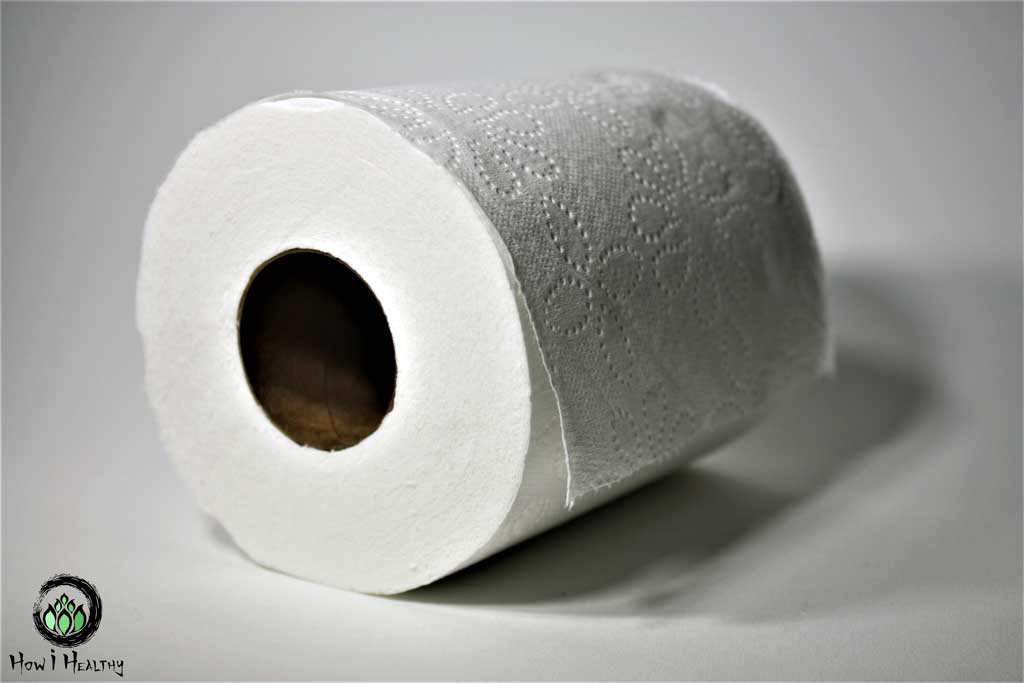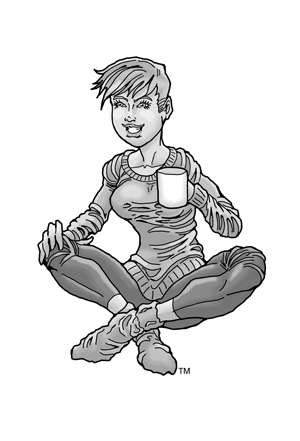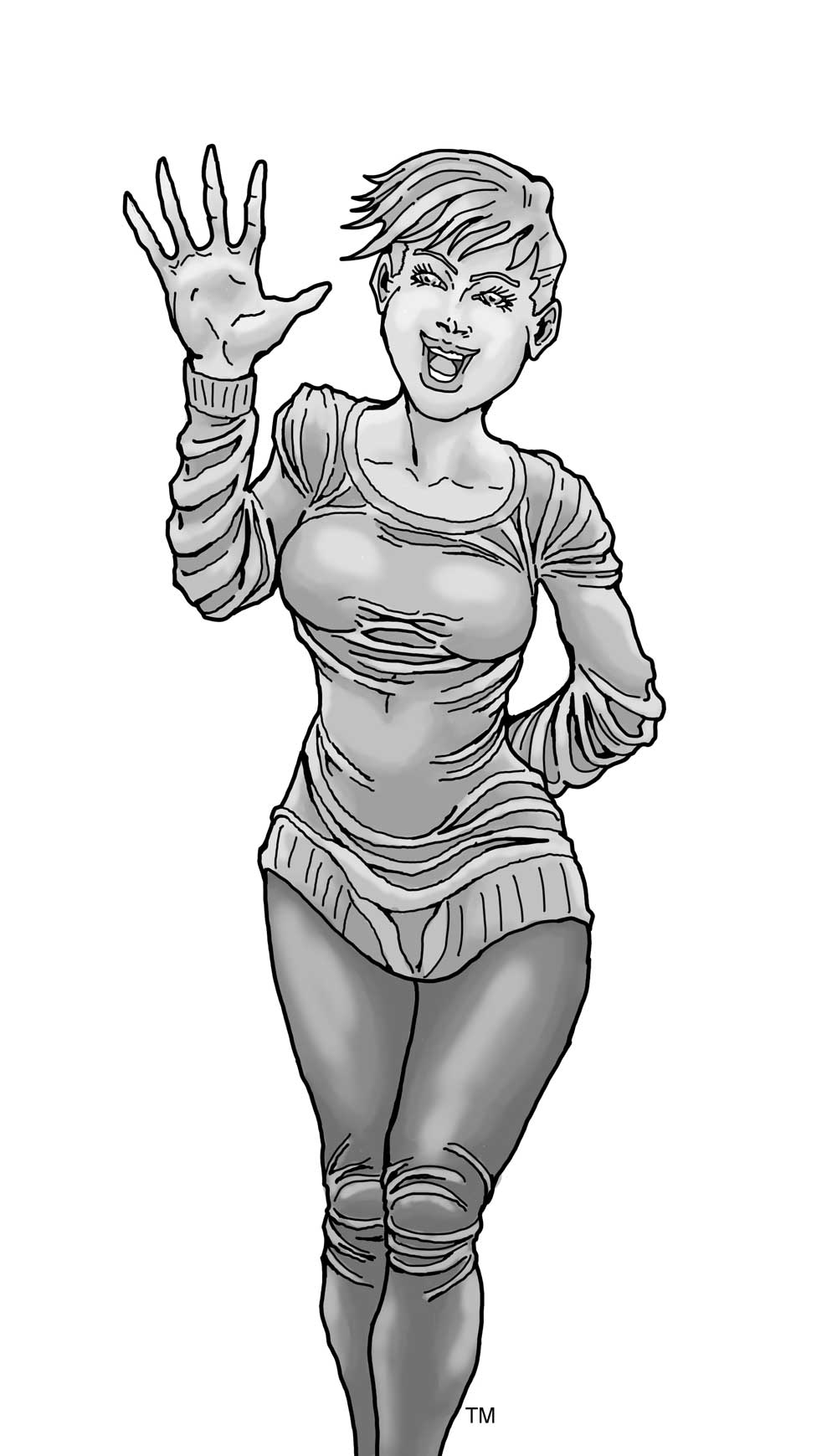In This Article, We'll Cover:
- Bidet Misconceptions & Myths
- Bidets History & Facts
- Bidets Environmental Impact
- Po(o)pular Bidet Questions
- How I Healthy’s Favorite Bidet Brand & Why
A hole-istic approach to bidet basics!
If you grew up in America or England, then chances are you’ve not used a bidet much.
Instead, you’ve suffered death-by-a-thousand-wipes.
Bidets, also known as magical booty fountains, (okay, not really, but they could be!) are commonplace in households around the world. But this tushy accessory is often absent from American and English bathrooms.
When has smearing nasty all over ever been the preferred method of cleaning anything?
Cleaning poop in any capacity, other than our own, warrants gloves, crazy strong cleaners, and sometimes caution tape. We don’t just wipe things clean; we wash things clean.
So why would a sad dry wipe with toilet paper be the butt bestie?
Plus, there’s the detrimental environmental and social impacts of toilet paper usage. Spoilers, it’s flushing forests down the toilet and destroying Indigenous Peoples’ homes.
Let’s rectify that.
Bidet: The Back Story
Bidets, thought to originate from 1600s France, functioned as washbasins for the perineum. (1)
Etymology:
French: bidet, meaning “pony”
This might be a nod to the straddling of the bidet, like mounting a horse. (1)
Reserved for the Royal Backside Only
Before indoor plumbing, ready access to water was a luxury. Bidets required hand hauled water, marking the practice as an indulgence only the wealthy could afford. (1)
Marie Antoinette, in her cell awaiting execution, had a “new bidet trimmed in red basane” (2). This emphasizes how essential the bidet was to the aristocracy.
Napoleon Bonaparte even bequeathed his “silver-gilt bidet” to his son. Thanks dad. (11)
In the 1800s indoor plumbing became commonplace. Bidets moved from bedchambers to bathrooms to hook-up to centralized water lines. People across the world could now access the bidet. (1)
Toilet Taboos
Despite this global popularity, America and Britain didn’t join the perineum-cleaning party.
Even during World War II, when American and English soldiers overseas saw bidets, they didn’t bring their discovery home. (1)
Historians have speculated, and often agree, that puritanical ideals shrouded the bidet in taboo. Thus, stopping the trend in its tracks. Bidets, seen in foreign brothels frequented by soldiers, were associated with prostitution, and therefore sin. (1)
Historians also believe that bidets were associated with douching and birth control too. Another taboo by Puritanical standards. (1)
Let’s throw in one more unmentionable. Menstruation.
Period products of the time were limited. Bidets offered a refreshing way to clean oneself. (1)
Bidets had everything going against them:
Vaginas, prostitutes, sex, birth control, douching, and periods.
Oh, how scandalous!
Because bidets were associated with all the taboos of the age, they never really caught on in some societies.
So, Americans and the English resorted to poop smearing instead.
The Modern-Day Derriere Dream Machine
Skip to 1964, the American Bidet Company tried, and failed, to mass market bidets in the States. (1)
Instead, Japan took interest. (1)
Japanese companies spurred innovations that would transform the humble bidet into magic. Features like oscillating sprayers, heated seats, air dryers, music, mood lighting, and deodorizing gizmos hit the market. (1)
So why, with all the fantastic features that bidets have, do American and English bathrooms still not have bidets?
New Technology, Same Old Problems
One reason might be that some bidets, especially the tricked-out ones, can run price tags upwards of $500 (1). With a price like that bidets might as well be exclusive to royalty again.
Another reason might be that bidets still carry the stigma as a “woman’s device”. This might deter folks from using them. (1)
Or it could be flushable wet wipes.
Wet wipes are a single-use moist towelette that, in recent decades, has attempted to fill the void of the bidet-deprived soul by providing that clean & fresh feeling post-poo.
Wet Wipes Are Not Bidets
Wet wipes are a sad excuse for a bidet. And way more harmful to the planet and infrastructure.
Wet wipes are single-use plastics that damage our bodies, the environment, sewer systems, and water treatment plants. (1)
What is a wet wipe?
One Word: Bad
Non-flushable wet wipes are a microplastic fiber of polyethylene terephthalate (PET), polypropylene (PP), or a combination of PET and cellulose. (8)
“Flushable” wet wipes are not supposed to contain plastics. But they do. PET, polyester, PP, polystyrene (EPS), and polyurethane (PU) all were detected in “flushable” wet wipes. (8, 9)
Studies on wet wipes conclude that there are potential irritants, preservatives, and fragrances linked to allergic reactions and contact dermatitis found in wet wipes. (5, 6)
Rubbing these irritants right on bodies most delicate bits? Not so great. The Chemical Guide dives more into why.
Can’t Flush This Problem Away
Just because wet wipes are marketed as “flushable”, that does not mean they are. (25)
Toilet paper breaks apart approximately 8 seconds after water exposure. Plastic wet wipes? Nope, they stick around. (10)
Wet wipes, once flushed, bind with oils and fats found in waste creating a dense hard clump of nasty. (1, 4)
Sometimes those clumps grow…and grow…and grow.
These clumps can grow into landmasses. Like the 15-ton “fatberg”, a colossal fat and wet wipe structure reminiscent of an iceberg, found in London’s sewers. (4)
Or the 10-ton “fatberg” that cost $600,000 to clear. (4)
Or the 300-ton “fatberg” in Birmingham, England found that, as of 2021, is still clogging pipes. (27)
“Fatbergs” aren’t rare.
Wikipedia has a whole page dedicated to “Notable Fatbergs” (28).
It’s not just English sewers clogging up.
U.S municipalities dish out $1 billion a year dealing with “fatbergs”. (25)
Wet wipes also gunk up the environment by contributing to micro-plastic pollution. (8, 9, 25)
More alarming? Wet wipe use increased 36% in the last decade and half of the global market is in the US. (25)
That could mean more fatbergs clogging up our systems.
Trees to Toilets: Flushing Away The Forest
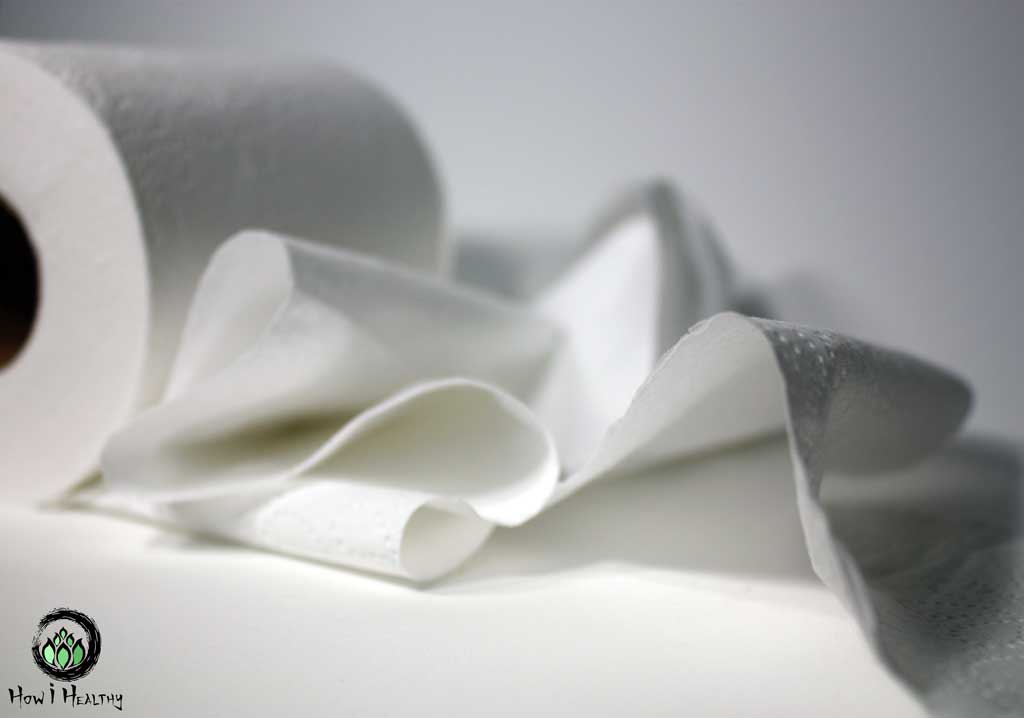
“Chopping down trees” is a familiar saying, but what about “flushing down trees”?
That’s what toilet paper is. Forests down the u-bend.
Commercially available wood pulp toilet paper was invented in 1857. Since then, America has become the largest consumer of toilet paper.
The average American uses around 141 rolls annually.
Japan uses 91 rolls.
The lowest toilet paper consumer? Brazil, with 38 rolls. (13)
Most toilet paper is detrimental to Indigenous peoples and the environment.
Here’s how:
American’s use roughly 36.5 billion rolls of toilet paper every year. That’s about 15 million trees worth of wood pulp. (12)
Toilet paper is lumbered from the boreal forests in Canada. These forests are home to over 600 Indigenous communities. (13)
Clearcutting boreal forest growth destroys both native lands and native animal species. Animals that are critical to Indigenous culture and livelihood.
And annual toilet paper production:
- Releases approximately 26 million metric tons of carbon dioxide
- Uses 473,587,500,000 gallons of water
- 3 terawatts of electricity
(12, 13)
Those are some big numbers!
There are a few ways to limit the impact of toilet paper usage. Recycled toilet paper uses ½ the water to produce, and releases ½ the hazardous air pollutants compared to virgin wood pulp TP. (13)
And the market for alternative fiber toilet paper is growing.
One buzzword I see popping up everywhere is bamboo.
Bamboo grows 20 times faster than trees and releases 30% fewer greenhouse gasses during production than virgin wood. But ethical standards down the supply chain of bamboo products are lacking. (13)
The Natural Resources Defense Council, NRDC, has a fantastic low impact Toilet Paper Buyers Guide.
Swapping out for a low impact toilet paper is a great start. But imagine pairing that your bidet bestie. You’ll save money on toilet paper & fight deforestation!
Why Bidets Are Awesome
Okay, we’ve covered the basics: history, wet wipes, and toilet paper problems.
On to what makes bidets so great.
Reduce Toilet Paper Dependency
Other than simple magical booty-and-bits washing, bidets reduce toilet paper use. No more wiping till your clean.
Less toilet paper used means less deforestation and destroying Indigenous peoples’ homes and livelihoods. (13)
Zero waste for your waste!
Health Benefits, & One Potential Risk
In studies, bidets link to positive post-hemorrhoidectomy care. Bidets can also improve nursing home resident cleanliness. (14, 15)
Folks with colorectal conditions like Crohn’s disease can spare their bums from constant toilet paper chafing by using a bidet instead. (16)
Individuals with limited range of motion, physical limitations, muscle weakness, or other conditions that make reaching around difficult, might find the bidet beneficial. (16)
That said, some studies have linked consistent bidet use by high-risk pregnant individuals to vaginosis and risk of preterm birth. But other studies have claimed no risk for similar patient populations. One study of a Japanese hospital found bacteria contaminated public heated bidets. (17, 18, 19, 20)
If you are concerned about any health risks, consult your medical provider.
No Stubborn Clingers or Poop Hands
So, you’ve taken a great poop, and then it happens.
Poop on the hand while you’re wiping.
Instead of spending the rest of the time trying to not touch anything, imagine a hands-free cleanup crew that gets the job done in seconds.
No missed corners or curves.
No dangling clingers. No poop hands.
Just a clean bum and bits, simple as that.
Tampon Pee String? Nope!
If you’ve used tampons, then you may know what I’m talking about here.
While I prefer Compostable & Organic Tampons over other methods, one obnoxious negative is the dreaded pee string.
I’ve tried holding it out of the way or drying it off with some toilet paper. It doesn’t work.
Enter bidets! A convenient way to rinse off the string before, keeping underwear fresh and clean.
No more pee string fuss.
Period Surprises & General Freshening Up
Speaking of periods, I can’t tell you how many times mine has snuck up on me.
Bidets are a refreshing way to clean up surprises without a full-on shower.
Use pads or panty liners and want to feel fresh when changing them out?
Running errands and got a swamp butt?
You’re in luck! Bidets are quick and thorough little pick-me-ups to feel shower-fresh all day long.
Sexy Times!
Either pre, post, or during if that’s your thing, bidets and sexy times are one great combo.
Nothing gives me a confidence boost like knowing I’m fresh.
And for Post sexy time clean up, sometimes there just isn’t time for a full-on shower. But when you have a personal mini fountain-o-magic to clean up the bits, then you may not need to.
Bidets Q & A
Now on to a few frequently asked questions and common misconceptions.
Can I Install A Bidet Myself?
We all have different plumbing skills and there are several versions of bidets. If you can install one yourself depends on your skill set and which model you buy:
- Stand Alone, Floor-Mounted Ceramic Bidets: Look like works of art and are a completely separate unit from the toilet. This is beyond my plumbing skills (which are zero) and might require a bathroom renovation to install.
- Handheld Bidets: Look like little handheld showerheads that tap into the water supply lines with simple hookups.
- Toilet/Bidet Combo: Toilet with a built-in bidet. These combos can include mood lighting, music, heated seats, or air dryers. This style means swapping out the existing toilet.
- Bidet Attachments: A small apparatus that fits under the toilet seat of an existing toilet. A less expensive version of a combo toilet/bidet. It installs by tapping into the water line. There can be electronic features as well.
Isn't The Water From A Bidet Dirty?
Nope!
Bidets do not use dirty or grey water.
Most bidet hoses attach directly to a water supply and do not draw from the toilet tank water. (23, 24)
Is The Water Cold?
The water from a bidet is tap water temperature. Unless you have a model that uses the hot water line of your sink or have an electric heated tank feature.
I find my bidet colder in the winter and neutral temp in the summer, just like my sink water.
Sometimes it’s a bit of a chilly surprise, but I just have a laugh and enjoy my wipe-free poo.
Will My Butt Be Wet After Using It?
It will if you don’t dry it off afterwards.
There are several options for the post-bidet performance:
- Have a sit and air dry for a few minutes.
- Pat dry with a small piece of toilet paper.
- Dry off with a designated bidet towel.
- Air dry feature in some electric models.
Does It Require Electricity?
That depends on the model you choose. There are some that do and some that don’t.
Typically, basic models will not need electricity. Want heated seats, heated water, air dryers, or mood lighting? Those will need access to an outlet.
There are non-electric heated water bidets that can tap into the hot water line under the bathroom sink.
Does It, Ya Know, Go Up Your Butt?
Bidets are not for enemas.
It’s a delicate stream of water angled just right and intended for external use only.
So no, it’s not supposed to go up your butt.
That said, water pressures could vary. I have had a few surprising moments with high-pressure bidet streams.
Most bidets have knobs so you can adjust the pressure.
Are Bidets Only For Butts?
Nope!
Bidets are wonderful for back parts and front parts alike!
Some bidet models have two separate nozzles, one angled more backward the other more forward. No matter what parts you might have a bidet can get them clean.
Fun fact: I use both the front and back features almost equally.
Can You Orgasm From Using A Bidet?
I have never tried to, but I don’t see why you can’t!
It’s a pleasant spray that does feel good, so I’m sure if the mood struck me and I stuck around, things could happen.
If you want to use a Sustainable Sex Toy with your bidet, make sure it’s waterproof.
Are There Portable Bidets?
I totally get it. Once you go bidet, you can’t go back to endless-wiping doom.
I always miss my home bowl when taking a poo out and about town.
Fortunately, there is salvation!
TUSHY©, a cleverly designed company with hilarious photos, descriptions, and how-to’s has a compact and collapsible TUSHY® Travel Bidet. I’ve yet to try it, but it’s on the list!
My Favorite Bidet
I love my TUSHY©.
Not only is their entire website hilarious to read, TUSHY© is one sexy looking bidet too.
And there’s no “feminine wash” gendered nonsense either.
Plus, TUSHY© has some noteworthy social and environmental stewardship I’ve yet to see in other bidet companies.
Product & Company Kudos
- TUSHY© “fartnerships” (their word genius, not mine) with Cool Effect, a nonprofit aimed at reducing carbon emissions.
- A portion of TUSHY© profits go to Samagra Sanitation, an initiative that’s building community toilets in Pune, India. (26)
- Gender-inclusive language. No “feminine wash” ug, it hurts just to type it out.
- Spare parts are available for repairs.
Bottom Line: Yay, Bidets!
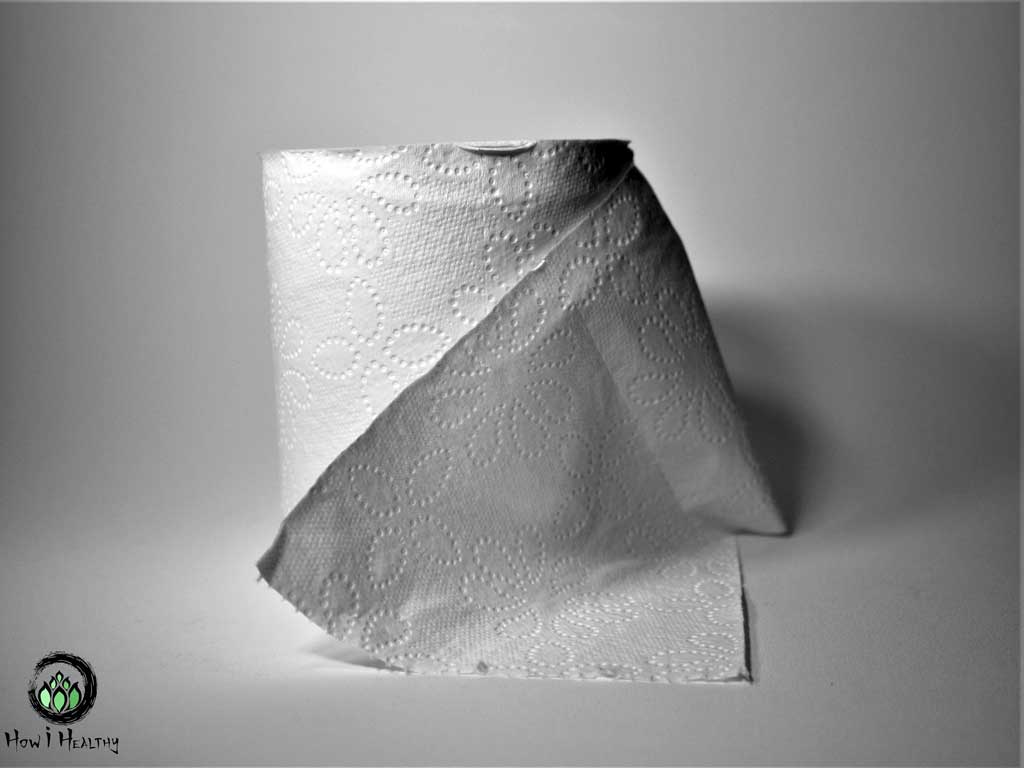
The French, like Marie Antoinette who had a bidet in her dungeon before her execution, or Napoleon Bonaparte, who bestowed his own to his son, knew how special these butt fountains are. (2, 11)
Alas, bidets are a fabulous feature often absent from American and British households. (1)
Instead, single-use plastic wet wipes gunk up our sewer systems. (4, 8, 9, 10)
Or toilet paper harvested from the forests destroy Indigenous Peoples homes. (12, 13)
Bidets offer:
- A tree-saving alternative that is better for sewer systems & water treatment plants.
- An option for individuals with limited range of motion or other conditions that might hinder the toilet experience. (16)
- An end to poop clingers, poop hands, and endless wiping.
A hands free, clean tushy in seconds? I’ll take two! #2 that is.
Bidets are so much more than poop though:
- Pre and post sex (or during, I’m not judging) use? Easy. No shower required.
- Surprise periods that can make a mess? Gone in moments.
- Swamp butt from walking the dog? Consider it cleaned.
- Tampon pee string? Nope.
- The front bits can get just as much attention, whatever bits you might have.
Bidets have many options. Non-electric, electric, air dryer, mood lighting, music, warm water, oscillating jets, you name it. Even Travel Bidet form!
I like the TUSHY© Classic 3.0.
This bidet not only reduces water usage, but the company supports several environmental and social projects as well.
Oh, and while we’re talking about poop, learn how to take The Best Poop of Your Life.
That’s How i Healthy!
-Artemis
- Hart, Maria Teresa. “Why Don’t Americans Use Bidets?” The Atlantic, Atlantic Media Company, 18 Mar. 2018, theatlantic.com/technology/archive/2018/03/the-bidets-revival/555770/
- Editors, France Today. “An Exclusive Excerpt from ‘Marie Antoinette’s Darkest Days.’” The Best Of France Today, 17 July 2017, francetoday.com/learn/history/an-exclusive-excerpt-from-marie-antoinettes-darkest-days/
- Bidet (France); Made by Noël J Baudin (French, 1719 – 1784); carved fruitwood, caning, leather, tin-glazed earthenware; 1968-114-1-a/c
- Kaplan, Sarah. “The Disgusting 10-Ton ‘Fatberg’ That Broke a London Sewer.” The Washington Post, WP Company, 22 Apr. 2015, washingtonpost.com/news/morning-mix/wp/2015/04/22/the-disgusting-ten-ton-fatberg-that-broke-a-london-sewer/
- Aschenbeck, Kelly A, and Erin M Warshaw. “Allergenic Ingredients in Personal Hygiene Wet Wipes.” Dermatitis : contact, atopic, occupational, drug 28,5 (2017): 317-322. doi:10.1097/DER.0000000000000275. https://pubmed.ncbi.nlm.nih.gov/28338537/
- Warshaw, Erin M et al. “Wet Wipe Allergens: Retrospective Analysis From the North American Contact Dermatitis Group 2011-2014.” Dermatitis : contact, atopic, occupational, drug 28,1 (2017): 64-69. doi:10.1097/DER.0000000000000248. https://pubmed.ncbi.nlm.nih.gov/28002231/
- Priestley, G C et al. “Changes in skin pH after the use of baby wipes.” Pediatric dermatology 13,1 (1996): 14-7. doi:10.1111/j.1525-1470.1996.tb01179.x. https://onlinelibrary.wiley.com/doi/10.1111/j.1525-1470.1996.tb01179.x
- Ó Briain, Oisín et al. “The role of wet wipes and sanitary towels as a source of white microplastic fibres in the marine environment.” Water research 182 (2020): 116021. doi:10.1016/j.watres.2020.116021. https://pubmed.ncbi.nlm.nih.gov/32591164/
- Pantoja Munoz, L., Gonzalez Baez, A., McKinney, D., & Garelick, H. (2018). Characterisation of “flushable” and “non-flushable” commercial wet wipes using microRaman, FTIR spectroscopy and fluorescence microscopy: to flush or not to flush. Environmental science and pollution research international, 25(20), 20268–20279. https://link.springer.com/article/10.1007/s11356-018-2400-9. https://link.springer.com/article/10.1007/s11356-018-2400-9
- Bonanos, Christopher. “Why Adult Wipes Are Bad News For the Sewage System — New York Magazine – Nymag.” New York Magazine, New York Magazine, 4 Oct. 2013, https://nymag.com/news/intelligencer/flushable-wipes-2013-10/
- Bonaparte, Napoleon. “Napoleon’s Last Will and Testament.” Inventory of My Effects, Which Marchand Will Take Care Of, Convey To My Son. “List (A)”, 15 Apr. 1821, napoleon.org/en/history-of-the-two-empires/articles/napoleons-last-will-and-testament
- “Wipe or Wash? Do Bidets Save Forest and Water Resources?” Scientific American, Scientific American, 16 Dec. 2009, scientificamerican.com/article/earth-talks-bidets/
- Jennifer, Skene. NRDC & STAND, 2019, pp. 4–25, THE ISSUE WITH TISSUE: HOW AMERICANS ARE FLUSHING FORESTS DOWN THE TOILET.
- Hsu, Kuo-Feng et al. “Comparison of clinical effects between warm water spray and sitz bath in post-hemorrhoidectomy period.” Journal of gastrointestinal surgery : official journal of the Society for Surgery of the Alimentary Tract 13,7 (2009): 1274-8. doi:10.1007/s11605-009-0876-9. https://pubmed.ncbi.nlm.nih.gov/19337777/
- Cohen-Mansfield, Jiska, and James R Biddison. “The potential of wash-and-dry toilets to improve the toileting experience for nursing home residents.” The Gerontologist 45,5 (2005): 694-9. doi:10.1093/geront/45.5.694. https://academic.oup.com/gerontologist/article/45/5/694/652615?login=false
- Wu, Katherine J. “The Bottom Line About Bidets.” com, Smithsonian Institution, 20 May 2020, www.smithsonianmag.com/innovation/bottom-line-bidets-180974916/
- Ogino, Mitsuharu et al. “Habitual use of warm-water cleaning toilets is related to the aggravation of vaginal microflora.” The journal of obstetrics and gynaecology research 36,5 (2010): 1071-4. doi:10.1111/j.1447-0756.2010.01286.x. https://obgyn.onlinelibrary.wiley.com/doi/10.1111/j.1447-0756.2010.01286.x
- Asakura, Keiko et al. “Effect of bidet toilet use on preterm birth and vaginal flora in pregnant women.” Obstetrics and gynecology 121,6 (2013): 1187-1194. doi:10.1097/AOG.0b013e318291bc16. https://pubmed.ncbi.nlm.nih.gov/23812451/
- Kim, Yoo-Min et al. “Prospective study of bidet toilet use: Association of abnormal vaginal colonization and preterm birth in high-risk pregnant women.” The journal of obstetrics and gynaecology research 45,6 (2019): 1134-1142. doi:10.1111/jog.13953. https://pubmed.ncbi.nlm.nih.gov/30884065/
- Katsuse, A. Kanayama, et al. “Public Health and Healthcare-Associated Risk of Electric, Warm-Water Bidet Toilets.” Journal of Hospital Infection, vol. 97, no. 3, 2017, pp. 296–300., doi:10.1016/j.jhin.2017.07.021. https://pubmed.ncbi.nlm.nih.gov/28756169/
- Freeman, Matthew C et al. “Hygiene and health: systematic review of handwashing practices worldwide and update of health effects.” Tropical medicine & international health : TM & IH 19,8 (2014): 906-16. doi:10.1111/tmi.12339. https://pubmed.ncbi.nlm.nih.gov/24889816/
- “Show Me the Science – Why Wash Your Hands?” Centers for Disease Control and Prevention, Centers for Disease Control and Prevention, 10 Sept. 2020, cdc.gov/handwashing/why-handwashing.html
- “Frequently Asked Questions.” Luxe Bidet, luxebidet.com/faq/.
- “Frequently Asked Questions.” TUSHY, hellotushy.com/pages/frequently-asked-questions.
- Kary, Tiffany. “In Fatberg Fight, NYC Goes to War Against Flushable Wipes.” com, Bloomberg, 14 Mar. 2019, www.bloomberg.com/news/features/2019-03-15/what-s-a-fatberg-nyc-goes-to-war-against-flushable-toilet-wipes
- “Carbon Neutral.” TUSHY, hellotushy.com/pages/carbon-neutral.
- “Giant 300-Tonne Fatberg Blocks Birmingham Sewer.” BBC News, BBC, 1 May 2021, bbc.com/news/uk-england-birmingham-56952152
- “Fatberg.” Wikipedia, Wikimedia Foundation, 1 May 2021, en.wikipedia.org/wiki/Fatberg.
Want More?
Like obscure history and how seemingly insignificant things influence it? Want to know random toilet facts? Like local bookstores or the Earth?
These books will score you points on trivia night:
Flushed: How the Plumber Saved Civilization
By Hodding Carter
Your source for random toilet facts, history, and love for modern plumbing. It’s a breezy historical account that also addresses modern day plumbing issues. This short, yet witty book, is filled with the author’s gusto for toilets. There’s an unexpected, but appreciated, chapter bio-gas digesters too!
Buy at: Bookshop® or Better World Books®
Wiped: The Curious History of Toilet Paper
By Ronald Blumer
Here’s a quick read that’ll make you the toilet paper expert in any room. It’s beyond TP though. Discover historical bum wiping methods and different cultural perspectives about pooping. ‘Cause why not?
Buy at: Bookshop® or Better World Books®

